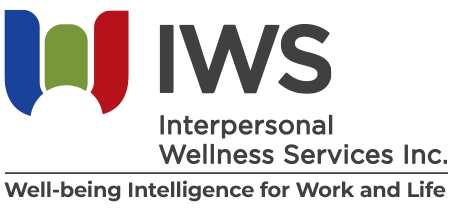Do you track well-being KPIs at work?
Imagine a workplace where employees are thriving. A place where well-being is at the forefront of the organizational strategy, driving productivity and innovation. This vision can be translated into reality when well-being Key Performance Indicators (KPIs) are introduced into your business framework.

What are Well-being KPIs?
Well-being KPIs are measurable standards that helps organizations track and assess their workforce's health, happiness, fulfillment, resilience, and other well-being risks. These indicators provide insights into how well-being initiatives impact employee performance, engagement, and overall organizational success. By focusing on specific metrics, companies can make informed decisions, create targeted wellness programs, and foster a supportive work environment.
The Importance of Well-being KPIs
Let’s expand on some of the benefits of well-being KPIs for organizations so you can assess their potential impact on your workforce.
Enhancing Employee Engagement
Employee engagement is the most essential driver for enhancing productivity and ensuring job satisfaction. When employees feel valued and supported, they are more likely to be engaged, happy and fulfilled in their work. Well-being KPIs such as participation rates in wellness programs, employee feedback scores, engagement survey results, and wellness conversation circles can highlight areas where employees feel connected and where improvements are needed.
Reducing Absenteeism
High absenteeism can indicate underlying health issues, workplace stress, unresolved conflicts, low psychological safety, or dissatisfaction. Tracking absenteeism rates provides a clear picture of the well-being of your workforce. A decrease in absenteeism following the implementation of wellness initiatives can indicate their effectiveness and the positive impact on employee health and happiness.
Decreasing Workplace Accidents
Safety is a cornerstone of a healthy workplace. Well-being KPIs related to workplace accidents, such as the number of incidents reported and severity levels, help in understanding the safety culture of your organization. Reducing accidents will reduce anxiety levels, protect employees, and boost morale and productivity.
Improving Performance Quality
Quality of work directly reflects an employee's mental and physical well-being. Organizations can gauge the impact of well-being programs on work quality and output by measuring performance-related KPIs, such as error rates, project completion times, customer satisfaction scores, and the overall well-being of all employees.
Reducing Voluntary Attrition
Employee turnover is costly and disruptive. Voluntary attrition rates can be a telling indicator of employee satisfaction and the organizational health. High turnover may signal issues such as burnout, lack of career growth, or poor work-life balance. Effective well-being programs can reduce attrition by addressing these concerns and creating a more supportive work environment.
There are some simple ways to employ this indicator if they are not yet part of your workforce data collection process. Here are some basic ones you can implement immediately.

Key Well-being KPIs to Monitor
- Participation Rates: Track the number of employees engaging in wellness programs and activities.
- Employee Feedback Scores: Collect and analyze feedback on well-being initiatives through surveys and focus groups.
- Absenteeism Rates: Monitor the frequency and duration of employee absences and plausible reasons.
- Accident and Incident Rates: Measure the occurrence of workplace accidents and near-misses.
- Performance Metrics: Assess work quality, responsible communication, error rates, and productivity levels.
- Attrition Rates: Analyze voluntary turnover and reasons for leaving.
- Health and Wellness Metrics: Track biometric screenings, fitness activity participation, and overall health assessments.
- Interpersonal Competency Development: Map improvements in behaviour, reduction of conflicts and overall employee collaboration rates where possible
- Leadership Development: Track leadership relationship improvement, employee satisfaction with leaders, rates of complaints and grievances that implicate leaders
- Mental and Emotional Resilience: Map employee resilience, trust, belonging, stress response, emotional intelligence, burnout, and psychological safety at work.
- Innovation: Increased new ideas generated, successful implementation, and increased service offerings or market share.
- Corporate Vision Alignment: Employee understanding of corporate goals, vision, and values.

Implementing Well-being KPIs
1. Set Clear Objectives
Define what you want to achieve with your well-being programs. Clear objectives help in selecting relevant KPIs that align with your organizational goals.
2. Collect Baseline Data
Before launching new initiatives, gather baseline data to understand employees' current well-being state and use this as a benchmark for improvement. This provides a reference point to measure progress and impact.
3. Regular Monitoring and Reporting
Consistently track and analyze well-being KPIs. Regular reporting ensures that you stay informed about the effectiveness of your programs and can make necessary adjustments.
4. Foster a Culture of Continuous Improvement
Encourage feedback and be open to evolving your well-being strategies based on KPI insights. Continuous improvement ensures that your programs remain relevant and effective.
Integrating well-being KPIs into your organization’s strategic objectives leads to a healthier, more engaged, and more productive workforce. By measuring and acting on these indicators, you can create a work environment where employees feel valued, supported, and motivated to perform at their best.
To Your Wellness,
Joyce
Question to Ponder
Ready to transform your workplace with powerful well-being KPIs?
Action Steps
At Interpersonal Wellness Services Inc., we specialize in developing and implementing comprehensive well-being strategies tailored to your unique organizational needs.
Take the first step towards a thriving, high-performance workplace.
Schedule a free consultation today!

